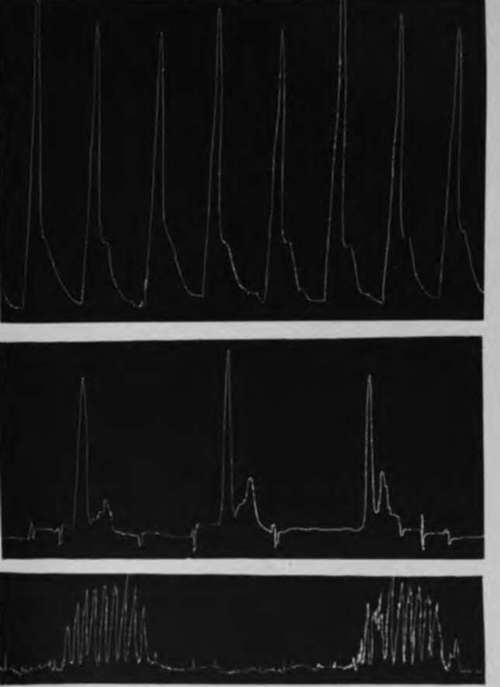VIII. Contractions Of The Empty Crop In Birds
Description
This section is from the book "The Control Of Hunger In Health And Disease", by Anton Julius Carlson. Also available from Amazon: The Control of Hunger in Health and Disease.
VIII. Contractions Of The Empty Crop In Birds
In normal pigeons, with appetites satisfied, the crop is very much distended, and only occasional contractions of the crop can be detected by means of the balloon in the cavity (Rogers). These contractions cannot be detected by inspection of the skin covering the crop. An hour or two after feeding stronger contractions in groups of 3 to 4 appear at 15- or 20-minute intervals. The motor activity of the crop is gradually increased until, 8 to 12 hours after feeding, groups of 8 to 20 strong contractions appear at intervals of 10 to 30 minutes. Later the crop of young birds passes into a state of continuous rhythmical contractions. When the food content of the crop is reduced to about one-third of the crop's capacity, the contractions are visible through the skin. At this time they involve only the lower part of the crop. When the crop is completely empty the contractions occur in periods of 10 to 60 minutes apart, with 8 to 20 contractions in each group. The contractions of the empty crop begin at the upper end, and pass over the entire crop as a peristaltic wave. Each contraction requires 12 to 15 seconds to pass over the crop. The balloon in the crop does not initiate contractions unless the pressure is excessive. A small fistula in the crop has no effect on the contractions.
It is thus evident that the empty or nearly empty crop of gallinaceous birds exhibits periods of powerful contractions involving the entire organ, while in the filled crop the periodic contractions are confined to the lower end of the organ mainly (Fig. 8, c).
Rogers' studies on the crop in the pigeon have not yet been extended to muscular stomach or gizzard. According to Rossi the stomach of chickens shows greater motor activity when empty than during digestion, but Mangold-states that the empty muscle stomach of the buzzard is quiescent. Stlibel, on the other hand, reports that the empty muscle stomach of pigeons and chickens and ducks shows a rhythmical action current, which obviously implies a corresponding activity or rhythm.

Fig. 8.-a, tracings of the gastric hunger contractions of the empty stomach of the bullfrog, will day of starvation (Patterson); b, tracing of the gastric hunger contractions of the turtle, 21st day of starvation (Patterson); c, tracing showing the periodic hunger contractions of the crop of birds (pigeon), 2d day of starvation (Rogers).
In the species of birds with the food reservoir in the esophagus (crop), the contractions of this region of the esophagus are probably the most important element in the genesis of the hunger sensation, because the crop is emptied sooner than the gizzard.
Continue to:
- prev: VII. Contractions Of The Partly Empty Stomach (Rumen) Of The Ruminating Animals
- Table of Contents
- next: IX. Contractions Of The Empty Stomach Of Amphibia And Reptilia
